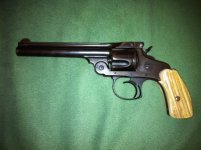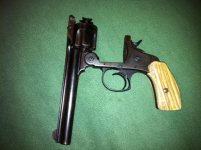Could someone tell me anything about this gun. I was told it is was a Model 4 .38 Double Action. No original grips serial number #371XXX. Both on the butt and the Cylinder itself. The trigger action needs repair as it feels as if the spring is not working properly. And if it was made before 1898 it would be an antique?......the last Pat # listed on the top of the barrel says 1889. A value?
Thanks for any help
Dmack
Thanks for any help
Dmack



